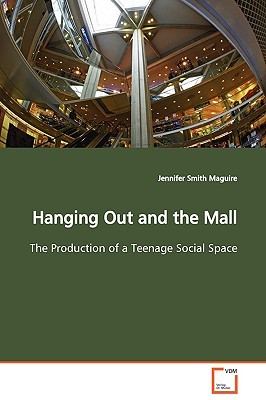
- We will send in 10–14 business days.
- Author: Jennifer Smith Maguire
- Publisher: VDM Verlag
- Year: 2008
- Pages: 116
- ISBN-10: 3639099575
- ISBN-13: 9783639099577
- Format: 15.2 x 22.9 x 0.6 cm, softcover
- Language: English
- SAVE -10% with code: EXTRA
Hanging Out and the Mall The Production of a Teenage Social Space (e-book) (used book) | bookbook.eu
Reviews
Description
Lacking other spaces to call their own, many young people turn to shopping malls as sites for hanging out. However, adolescents must negotiate several obstacles that stem from their ambivalent relationship with malls, which are simultaneously welcoming (safe environments that target the teenage market) and hostile (places in which teenagers are seen as a threat to safety and order). Based on ethnographic research and interviews with teenagers and mall authorities, the book analyzes hanging out as the tactical practice of movement--as shopping, loitering, and watching the crowd--which is both facilitated and constrained by the strategies of the mall. The book examines the intersections of the commercial, controlled and potentially public setting of the mall with the interactive, consumptive and disruptive activities of adolescents, suggesting how teens temporarily transform the mall to produce a space of their own. Bringing theoretical perspectives on space and youth together with grounded, empirical research, the book will be of interest to students and researchers in the fields of Sociology and Cultural Studies.
EXTRA 10 % discount with code: EXTRA
The promotion ends in 20d.03:06:42
The discount code is valid when purchasing from 10 €. Discounts do not stack.
- Author: Jennifer Smith Maguire
- Publisher: VDM Verlag
- Year: 2008
- Pages: 116
- ISBN-10: 3639099575
- ISBN-13: 9783639099577
- Format: 15.2 x 22.9 x 0.6 cm, softcover
- Language: English English
Lacking other spaces to call their own, many young people turn to shopping malls as sites for hanging out. However, adolescents must negotiate several obstacles that stem from their ambivalent relationship with malls, which are simultaneously welcoming (safe environments that target the teenage market) and hostile (places in which teenagers are seen as a threat to safety and order). Based on ethnographic research and interviews with teenagers and mall authorities, the book analyzes hanging out as the tactical practice of movement--as shopping, loitering, and watching the crowd--which is both facilitated and constrained by the strategies of the mall. The book examines the intersections of the commercial, controlled and potentially public setting of the mall with the interactive, consumptive and disruptive activities of adolescents, suggesting how teens temporarily transform the mall to produce a space of their own. Bringing theoretical perspectives on space and youth together with grounded, empirical research, the book will be of interest to students and researchers in the fields of Sociology and Cultural Studies.


Reviews